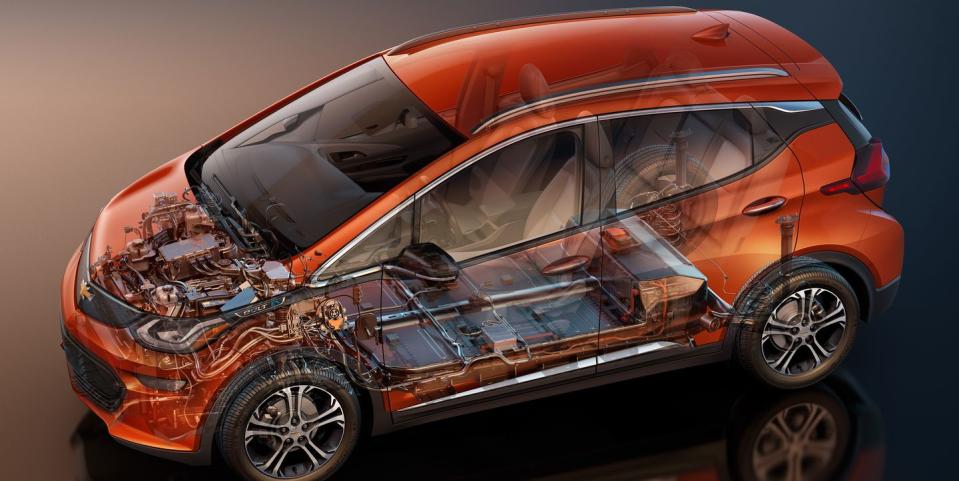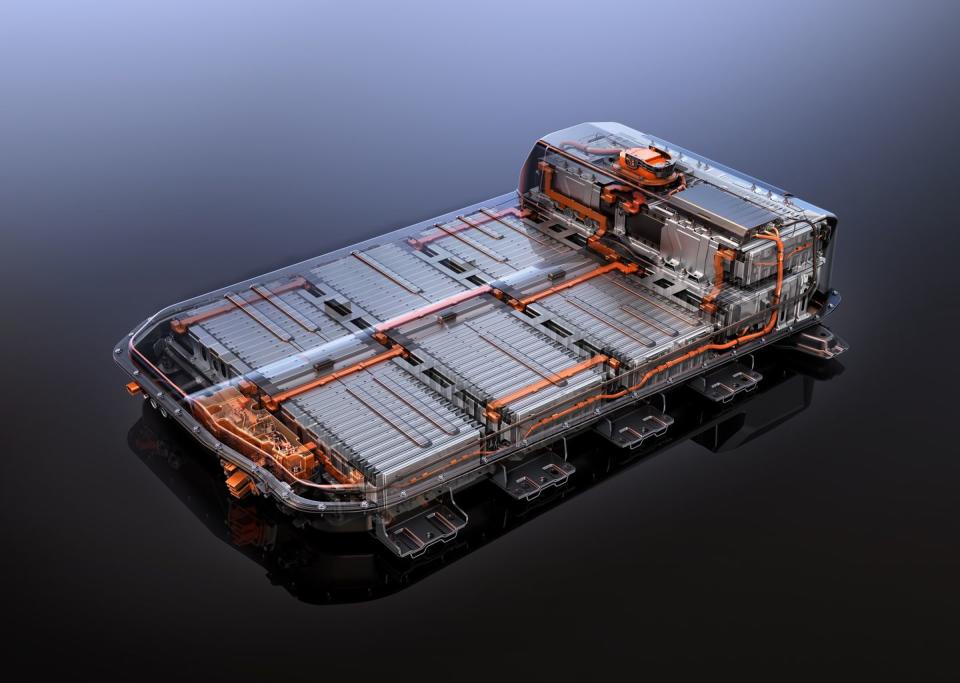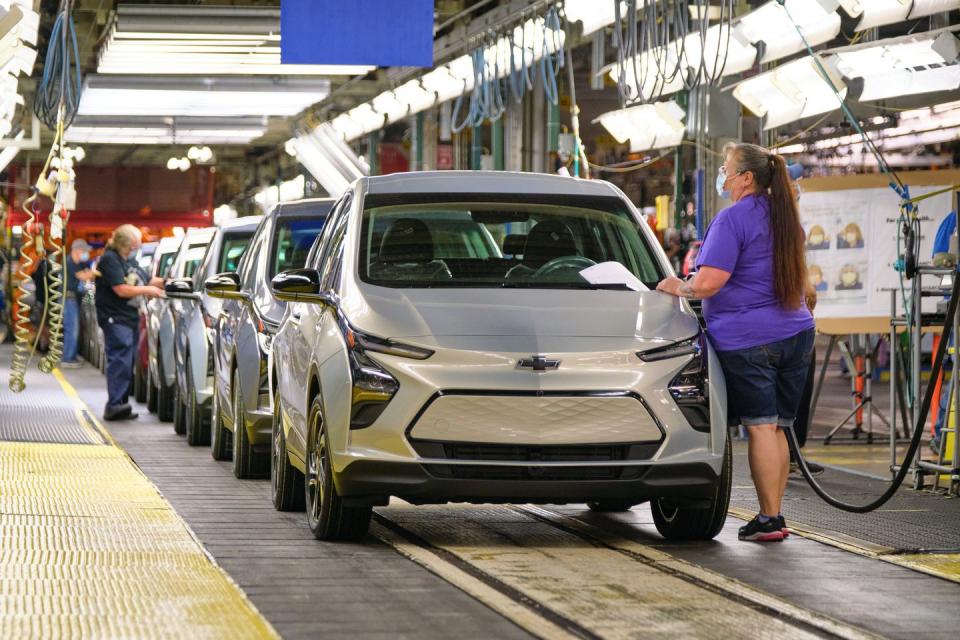Chevy Bolt Battery Recall: How Could This Have Happened?

Every Chevrolet Bolt EV and Bolt EUV that GM has made is under recall because their batteries could be defective and cause a fire.
What is it about the batteries—lithium-ion cells sourced from LG Energy Solutions and made on two different continents—that could have led to this?
Car and Driver talked to a battery engineer who gave us the full explanation. Plus, we give Bolt owners a checklist of what to do and how to get more information from Chevrolet.
General Motors has planned a full suite of electric vehicles launching over the next five years. So the ongoing recall of Chevrolet Bolt EV batteries—for which replacements can’t even start until GM works out what went wrong—threatens to cast a pall over the fall debut of the 2022 GMC Hummer EV pickup and next spring’s launch of the 2023 Cadillac Lyriq.
The recall has become a slow-motion catastrophe since it started last November. That was when GM identified 50,930 Bolt EVs from model years 2017 through 2019 that might have defective cells. That number later grew to 68,700 vehicles. In July, it recalled the same cars again after its engineers identified two potential defects that could, in rare cases, be present in the same cell.

Then it got worse: On August 20, out of “an excess of caution,” GM added all 63,680 Bolt EV and EUV models from the 2020 model year through the present day, along with a further 9340 Bolts from the 2019 model year that hadn’t been previously recalled.
The new Bolt EUV model was just being delivered to dealers; activities around that launch are now suspended. Meanwhile, Chevrolet had lowered Bolt prices considerably for 2022, recasting the car as an affordable entry-level EV complementing the upcoming luxury GMC and Cadillac models.
The total recall now numbers 141,000 electric vehicles over six model years, every Bolt the company has built since sales began in December 2016. No schedules have been given for any cell replacements. Roughly a dozen fires in Bolt EVs have been publicly identified. To date, no injuries or deaths are attributed to the problem.
But Bolt EV owners are confused, even as many continue to use their cars while parking and charging them outside. More troubling, the recall and the prospect of Bolt fires has spread. Bolts are apparently banned from one outdoor parking lot in San Francisco, for instance, where a sign cited "public safety" as the reason.
Still, there's little reason for public panic or widespread bans on EVs. "Yes, we've seen some battery fires, but the numbers are small, and they need to be put into perspective," Sam Abuelsamid, lead auto analyst for Guidehouse Insights, told NBC News.

Not Just Korean Cells
The Bolt’s lithium-ion cells were provided by GM’s longtime battery supplier LG Energy Solutions (the battery arm of giant Korean manufacturer LG). For several months, the carmaker believed the affected cells were limited to those produced in LG's plant in Ochang, Korea. Those cells were used only in 2017–2019 Bolt models.
Then in July, it said: "After further investigation into the manufacturing processes at LG and disassembling battery packs, GM discovered manufacturing defects in certain battery cells produced at LG manufacturing facilities beyond the Ochang, Korea, plant." That means LG's U.S. plant in Holland, Michigan, which supplied cells for the 2020–2022 Bolt line, was also affected.
So what went wrong?
GM says it has identified two different manufacturing defects.
Two Defects
One is a torn anode tab, the piece of the negative electrode that allows the cell to be wired into a group of cells, called a module, and then into full battery pack. The other is a folded separator, the thin sheet of material (typically a nonwoven polymer) that separates the anode and cathode.
In rare cases, GM said, the two defects may be present in the same cell, increasing the chance of a fire within affected cells, which can then spread through the module. GM told Bloomberg its modules are "passive propagation resistant," meaning that fires in one module should not spread to adjacent modules. Nonetheless, a fire within even part of the battery pack remains a serious event, one that can damage a vehicle substantially.
Since GM has declined to comment beyond the wording in its August 20 press statement, we asked Haresh Kamath, who designed battery cells for spacecraft at Lockheed Martin, to give us his take on what GM's statements meant. He's presently the director of distributed energy resources and energy storage at the Electric Power Research Institute (EPRI), the R&D arm of the U.S. electric utility industry.
A main principle of all device design, Kamath said, is to avoid single points of failure. He suggests that neither of the faults named by GM by itself leads to a cell failure. "Each of these things is not a big deal" individually, he said. But, in the very rare case that they both occur within the same cell, the combination of the two can create a point of failure—but not one either LG or GM likely thought to test for.
How could the companies only have become aware of the combined faults now, after 141,000 Bolts were built and sold over five years?

 Yahoo Autos
Yahoo Autos 